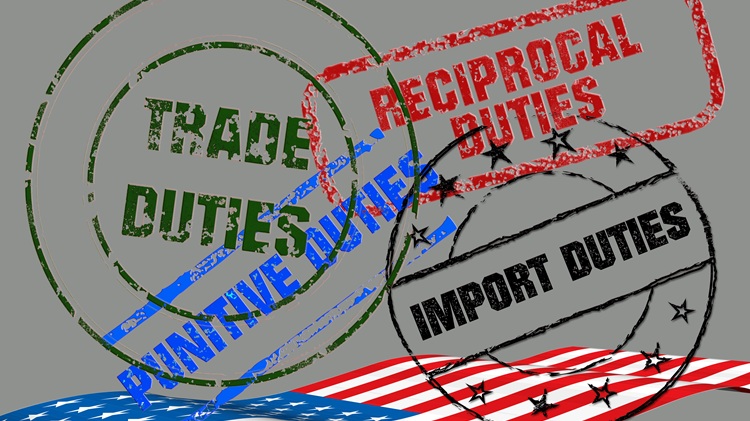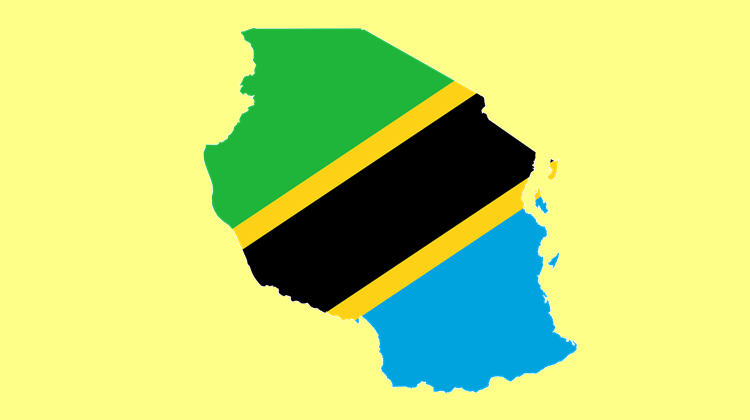Realising parallel investments in Africa’s green industrialisation

International frameworks and systems need to adapt to the reality of the continent as a green industrialisation destination.
Recent commitments and declarations by African leaders and development partners give renewed hope for a new pathway towards green industrialisation for Africa. Heading into the Paris Summit for a New Global Financing Pact in June, there was a well-articulated need to see progress on aligning the development finance and climate finance agendas.
While many were sceptical, there was progress. There was further progress at the Africa Climate Summit in Nairobi in September and a strong recognition of the opportunities during the World Bank/International Monetary Fund (IMF) Annual Meetings in Marrakech in October of a shift towards new investment strategies.
This pivot means focusing more on what investments are needed in the green economy to help Africa economically transform rather than expecting large-scale climate-related aid from the global north – which is responsible for most climate change impacts.
Challenges to green industrialisation in Africa
Now the real work begins. As we have seen for decades, it’s difficult to ramp up investment in Africa in traditional sectors such as agro-processing or light industrial manufacturing. It will be doubly difficult in new green industrial sectors. This is further challenged by the need to invest in renewable sources of energy while simultaneously investing in manufacturing and industrial capacity. These ‘parallel investments’ are at the core of Africa using green industrialisation to leapfrog traditional development paradigms.
However, there are many technology-enabled and digital tools and approaches that can help support parallel investment approaches at the country and regional levels. These include, for example, the internet of things (IoT), blockchain, and artificial intelligence (AI). Such investment is critical to avoid the worst outcomes of climate change. The Intergovernmental Panel on Climate Change has clearly indicated that the world isn’t on track for the 1.5°C target and that global emissions must be cut by 43% in this decade.
There are many calls for Africa to have equitable access to the Carbon Border Adjustment Mechanism
At the same time, the Sustainable Development Goals were meant to be achieved by 2030, yet they are off track. And 600 million people in Africa live without access to electricity, 400 million people have no access to clean water, and more than 950 million don’t have the ability to use clean cooking fuel.
Unfortunately, the much-needed investment is not materialising. The continent has around 40% of the globe’s renewable energy sources, yet it has attracted only 2% of renewable energy investments in the past decade. While there are numerous reasons for this, there are some key pain points. These include the lack of data around investment opportunities, perceived risk of African infrastructure projects, ineffective industrial policies, and a culture of learning across projects to reduce the learning curve on the development of renewable technology.
Digital technology tools and approaches could play an important role in building regional and national competencies in harnessing renewable energy resources, for example, to address development challenges such as access to clean electricity and job creation.
Data
In late September the African Center for Economic Transformation (ACET) convened more than 30 African and global experts to better understand what policy actions were needed to increase access to new and affordable innovative green investment tools. Also, what could be done in practical terms to ensure more data was available to investors.
They also addressed what technology-enabled tools were readily available to accelerate smart investment opportunities (e.g. AI, digitisation for business environment confidence, and technology to identify skills of the future). The experts provided key insights to overcoming the challenges and the need for parallel investments in green industrialisation.
Many digital tools can be used to build policy confidence for increased concessional flows and investment, blended finance and public-private partnerships
Digital tools and better use of data are central to leveraging external finance for green industrialisation investments. Across Africa, data for green investment decision making is scarce. In cases where data exists, it’s often not usable or not available at the right time, particularly for investors seeking the maximum amount of current information to make informed financial decisions.
One option to address this issue is greater use of blockchain and IoT to capture, store and share data. This can help ensure data is contextualised, break down silos across government, ensure data integrity and provide better opportunities for cross-border data exchange. This can be complemented by investment in remote sensing, satellite imagery across Africa, and climate surveillance technologies.
Risk
Many digital tools can be used to build policy confidence for increased concessional flows and investment, as well as blended finance and public-private partnerships. This can include tools to improve policies related to domestic resource mobilisation, to inform budget allocation, and to reduce financial losses through corruption and poor project implementation. Investors will only invest in large, complex green industrial projects if there is high confidence in the business, investment and governance environments.
Such confidence will also help to reduce the ‘Africa risk premium’ whereby financing is considerably more expensive for projects in Africa due to perceived risks. In some instances, there are common sense digital tools that governments can employ, while in other cases new and innovative approaches are emerging.
Common sense tools include using digital applications to improve public financial management, which will reduce corruption and tax avoidance while also increasing fiscal space for governments to invest in needed infrastructure. In addition, building digital green data dashboards to guide policymakers in making evidence-based green investment choices. Digitisation of government services and processes is not new, but there has been little focus on these opportunities specifically in the context of green investment.
A culture shift is needed to move beyond traditional investment and embrace green industrial opportunities
More innovative technology-based approaches relate, for example, to ACET’s research on leveraging AI for fiscal and monetary policy to ensure faster and more precise policy responses related to issues such as subsidies, taxation and interest rates. Likewise, ACET research has shown the potential of AI to inform the selection and design of investment projects.
Culture of learning
Parallel investment in both renewables and industry will require a significant culture shift. Digital literacy and familiarity with technology-enabled solutions is crucial, and often missing among senior policymakers in Africa. This needs to change rapidly as ministers and senior officials need to be champions for such investments. But to do so they need to understand the benefits.
To this end, the international community has an important role to play in articulating win-win scenarios; telling a positive story about the potential for jobs, revenue and climate benefits; and supporting leaders to advocate for Africa’s green industrialisation. Similarly, there is a need to think beyond ‘blended finance’ to new paradigms such as ‘blended investment’ that can connect Africa’s green transition to small and medium-sized enterprises, who can ensure that early innovations from African firms enter the market.
Industrial policy
Sound industrial policy is a prerequisite for effective green industrialisation. There is a need for African policymakers to refocus on modern industrial policy, which will serve as the anchor for green industrial policy. For the past few decades industrial policy has fallen out of favour, but there is a resurgence of critical thinking about the policy levers that can facilitate industrial productivity. This is due in part to value chain interruptions, a weakening of the multilateral system and the Washington consensus, and political economy strains between nations such as China and the United States (US).
There is a need to think beyond ‘blended finance’ to new paradigms such as ‘blended investment’
The US Inflation Reduction Act is the highest-profile recent example of clear industrial policy, boosting specific sectors and sub-sectors through incentives and subsidies, as well as trade restrictions. African governments will need to develop well-informed industrial policy that supports local and regional value chains linked to a wide array of industries directly related to, and supporting, green industrialisation.
Better alignment is needed to ensure Africa is appropriately supported by global frameworks to accelerate parallel investments in renewables and green industry.
Equitable approach to climate finance
It’s clear that Africa is not appropriately supported by existing global frameworks. At the World Bank/IMF Annual Meetings in October in Marrakech, many African finance ministers noted, with consternation, that green bonds were higher cost for African governments than regular Eurobonds. Likewise, the lack of an effective global carbon market makes it difficult to adequately leverage the protection of natural resources.
There remains information dissymmetry, as is evident in the lack of public data made available in the Global Emerging Markets Risk Database (GEMS), hosted by the World Bank, which could allow investors to make more informed choices. Senior officials at the World Bank/IMF Annual Meetings indicated that additional GEMS data would be made available, which will be welcomed.
There are many calls for Africa to have equitable access to the Carbon Border Adjustment Mechanism. This is a carbon tariff on carbon-intensive products (for example, cement) imported by European Union (EU) member states that is part of the larger European Green Deal. It was emphasised that the governments, in coordination with the African Union, needed to actively pursue policies that incentivised investment.
The US Inflation Reduction Act and the EU’s proposed Net-Zero Industry Act are examples of where policy can be used to incentivise green investment.
Looking ahead
While there are many opportunities for digital and technological tools to accelerate investment in green industrialisation, it’s clear the agenda is complex. Data availability and quality remain challenging for investors and policymakers, while new tools such as blockchain and AI are not fully embraced in many African contexts.
At the same time, a culture shift is needed to move beyond traditional investment and embrace green industrial opportunities. But this needs to happen at the same time as foundational industrial policy is designed and implemented.
Lastly, international frameworks and systems need to adapt to the reality of Africa as a green industrialisation destination with its vast natural resources and young population.
Image: The African Exponent








